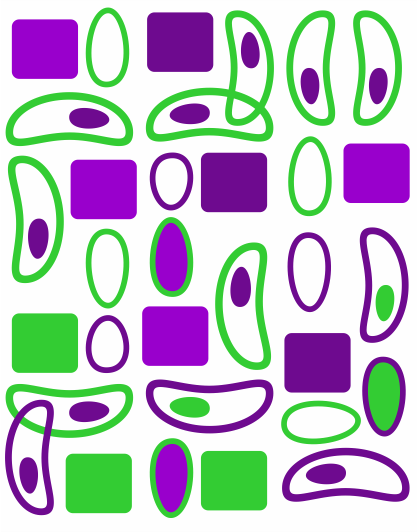First detection of Toxoplasma gondii DNA in African Giant Snails, Achatina fulica (Bowdich, 1822)
DOI:
https://doi.org/10.17696/2318-3691.31.01.2025.264Keywords:
Toxoplasma. Feces. Molluscum Contagiosum. DNAAbstract
Introduction: Environmental contamination by Toxoplasma gondii oocysts poses a risk to human and animal health, especially in urban areas with poor sanitation. The giant African snail (Achatina fulica), due to its direct contact with soil and consumption of vegetables, may act as a mechanical vector of the parasite’s oocysts. Objectives: To investigate the presence of Sarcocystidae DNA in fecal samples of A. fulica collected in Feira de Santana, Bahia, Brazil. Methods: Epidemiological observations were conducted at the collection sites, and climate variables were provided by the National Institute of Meteorology. In the laboratory, the animals were washed in running water, measured, placed in individual plastic containers, and fed daily with water and cabbage until fecal samples were processed. The cabbage leaves were subjected to parasitological testing to detect the presence of protozoa and helminths. Fecal samples were resuspended in an equal volume of absolute ethanol and frozen until DNA extraction, which was performed using a commercial kit. Nested PCR (nPCR) was conducted to detect ribosomal DNA fragments of protozoa from the Sarcocystidae family. Results: Of the 220 samples subjected to nPCR, 58 (26.36%; 95% CI: 20.99–32.57) amplified the expected 290-base pair fragment and were then subjected to RFLP. Of these, 41 (70.69%; 95% CI: 57.92–80.81) were cleaved by the restriction enzymes used in this study, showing a profile compatible with T. gondii. Conclusion: This is the first report on the presence of DNA compatible with T. gondii in A. fulica.
References
1. Dubey JP. The history and life cycle of Toxoplasma gondii. In: Weiss LM, Kim K. Toxoplasma gondii. Third Edition. Academic Press; 2020. p. 1-19. https://doi.org/10.1016/B978-0-12-815041-2.00001-3.
2. Zhu S, VanWormer E, Martínez-López B, Bahia-Oliveira LMG, DaMatta RA, Rodrigues PS, et al. Quantitative risk assessment of oocyst versus bradyzoite foodborne transmission of Toxoplasma gondii in Brazil. Pathogens. 2023;12(7):870. https://doi.org/10.3390/pathogens12070870.
3. Castillo-Cuenca JC, Almería S, Calero-Bernal R, Fernández-Escobar M, Fraga J, Entrena-García A, et al. Seroprevalence and genetic characterization of Toxoplasma gondii in domestic pigs intended for human consumption in Cuba. Zoonoses Public Health. 2023;70(2):125-33. doi: 10.1111/zph.13010.
4. Santos BM dos, Ribeiro EL dos S, Lima M de S. Toxoplasmose gestacional: um estudo epidemiológico. Rev JRG Estud Acad. 2023;6(13):674-87. DOI: 10.5281/zenodo.802568.
5. Dubey JP. Toxoplasmosis of animals and humans. 3. ed. Boca Raton: CRC Press; 2022 [cited 2024 Jul 7]. 542 p. Avaliable from: https://shorturl.at/UcH0n.
6. Dubey JP, Cerqueira-Cézar CK, Murata FHA, Kwok OCH, Yang YR, Su C. All about toxoplasmosis in cats: the last decade. Vet Parasitol. 2020;283:109145. doi: 10.1016/j.vetpar.2020.109145.
7. Pinto-Ferreira F, Paschoal ATP, Pasquali AKS, Bernardes JC, Caldart ET, Freire RL, et al. Techniques for inactivating Toxoplasma gondii oocysts: a systematic review. Braz J Vet Parasitol 2021;30(2):e026420.
8. López Ureña NM, Chaudhry U, Calero Bernal R, Cano Alsua S, Messina D, Evangelista F, et al. Contamination of Soil, Water, Fresh Produce, and Bivalve Mollusks with Toxoplasma gondii Oocysts: a systematic review. Microorganisms. 2022;10(3):517. doi: 10.3390/microorganisms10030517.
9. Fischer ML, Gang J de. A problemática do Caramujo Gigante Africano Invasor inserida nos debates entre Saúde Pública, Malacologia e Bioética Ambiental: uma agenda dos objetivos do desenvolvimento sustentável. Rev Iberoam Bioét. 2020;(13):1-17. https://doi.org/10.14422/rib.i13.y2020.003.
10. Santos FA dos, Santos LS dos, Silva MDF da, Schork G. Ocorrência e distribuição de Achatina fulica em zona urbana de Penedo, Alagoas, Brasil. Eng Sanit Ambient. 2022;27(3):465-75. https://doi.org/10.1590/S1413-415220200415.
11. Souza MG de, Lachi AMC, Albuquerque AR da C. Precariety of basic sanitation and the presence of the african snail (Achatina Fulica Bowdich, 1822) in the city of Manaus / AM-Brasil. Rev Nac Gerenciamento Cid 2020;8(67):117-129. DOI:10.17271/2318847286720202724.
12. Santos EMR. Collection points of Achatina fulica in Feira de Santana, Bahia. 2012-2013. [cited 2025 Jul 01]. Avaliable from: https://www.researchgate.net/publication/392870915_Collection_points_of_Achatina_fulica_in_Feira_de_Santana_Bahia_2012-2013.
13 Instituto Nacional de Metereologia. [cited 2024 Aug 13]. Brasília, DF: INMET. Available from: https://portal.inmet.gov.br/
14 . Tomiyama K. Age Dependency of sexual role and role and reproductive ecology in a simultaneously hermaphroditic Land Snail, Achatina fulica (Stylommatophora : Achatinidae). Venus J Malacol Soc Jpn. 2002;60(4):273-83. [cited 2024 Aug 20]. Available from: https://www.jstage.jst.go.jp/article/venus/60/4/60_KJ00004345218/_pdf/-char/en
15. Montresor A. Bench Aids for the diagnosis of intestinal parasites. 2. ed. Genebra: World Health Organization; 2020. 32 p. [cited 2024 Oct 15]. Avaliable from: https://www.who.int/publications/i/item/9789241515344
16. Dardona Z, Al Hindi A, Hafidi M, Boumezzough A, Boussaa S. Occurrence of Toxoplasma gondii on Raw Leafy Vegetables in Gaza, Palestine. J Food Prot. 2021;84(2):255-61. doi: 10.4315/JFP-20-160
17. Silva RC da, Su C, Langoni H. First identification of Sarcocystis tenella (Railliet, 1886) Moulé, 1886 (Protozoa: Apicomplexa) by PCR in naturally infected sheep from Brazil. Vet Parasitol. 2009;165(3-4):332-6. https://doi.org/10.1016/j.vetpar.2009.07.016
18. CDC CFDC. Epi InfoTM. 2022 [cited 2024 Oct 13]. Available from: https://www.cdc.gov/epiinfo/index.html
19. Tsushima E. Interpreting results from statistical hypothesis testing: understanding the appropriate P-value. Phys Ther Res. 2022;25(2):49-55. doi: 10.1298/ptr.R0019
20. Zhu S, Camp L, Patel A, VanWormer E, Shapiro K. High prevalence and diversity of Toxoplasma gondii DNA in feral cat feces from coastal California. PLoS Negl Trop Dis. 2023;17(12):e0011829. doi: 10.1371/journal.pntd.0011829
21. Kakakhel MA, Wu F, Anwar Z, Saif I, Akbar NU, Gul N, et al. The presence of Toxoplasma gondii in soil, their transmission, and their influence on the small ruminants and human population: a review. Microb Pathog. 2021;158:104850. doi: 10.1016/j.micpath.2021.104850
22. Berrouch S, Escotte-Binet S, Harrak R, Huguenin A, Flori P, Favennec L, et al. Detection methods and prevalence of transmission stages of Toxoplasma gondii, Giardia duodenalis and Cryptosporidium spp. in fresh vegetables: a review. Parasitology. 2020;147(5):516-32. doi: 10.1017/S0031182020000086
Downloads
Published
Issue
Section
Categories
License
Copyright (c) 2025 Arquivos de Ciências da Saúde

This work is licensed under a Creative Commons Attribution-NonCommercial-ShareAlike 4.0 International License.










